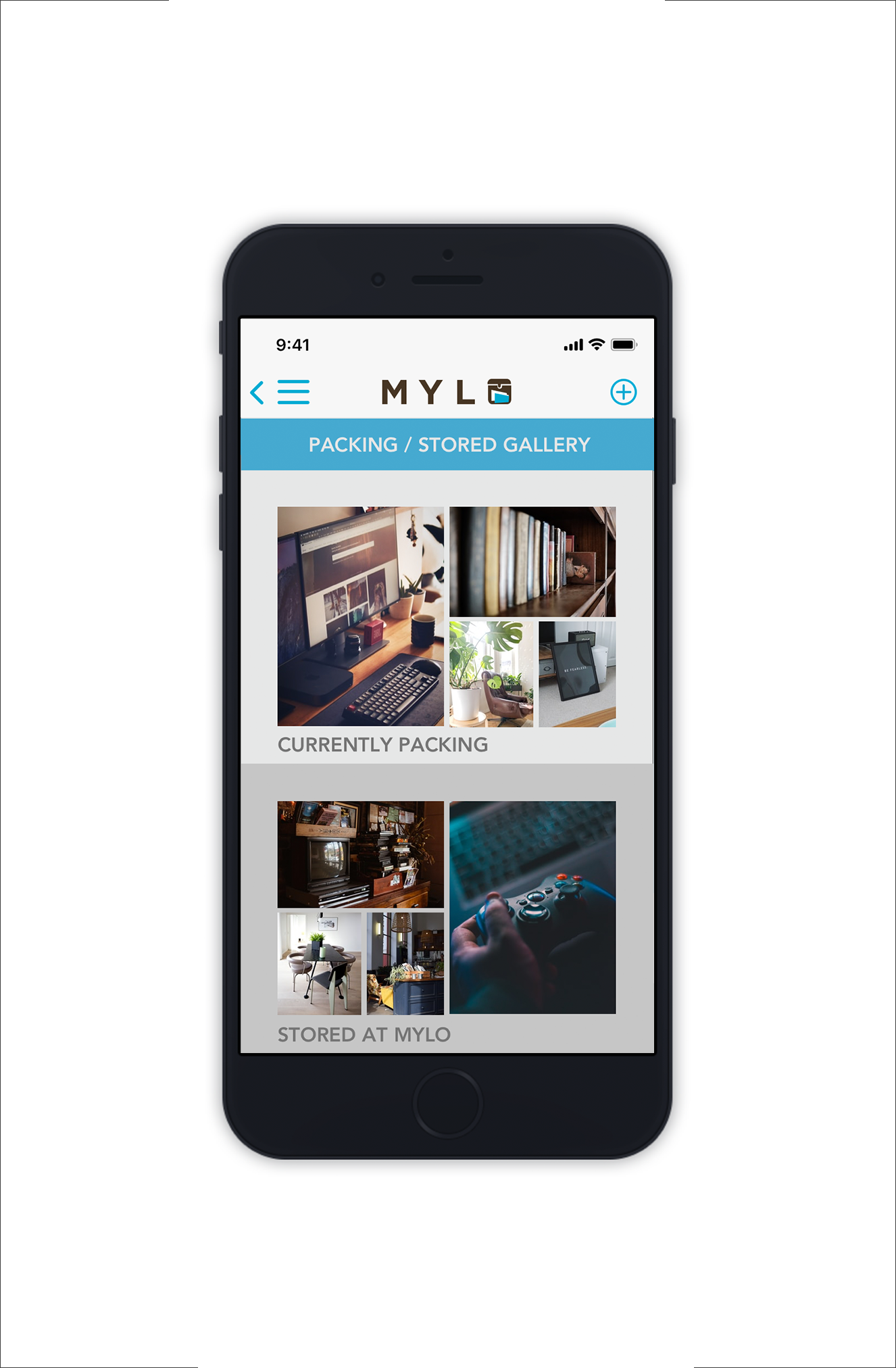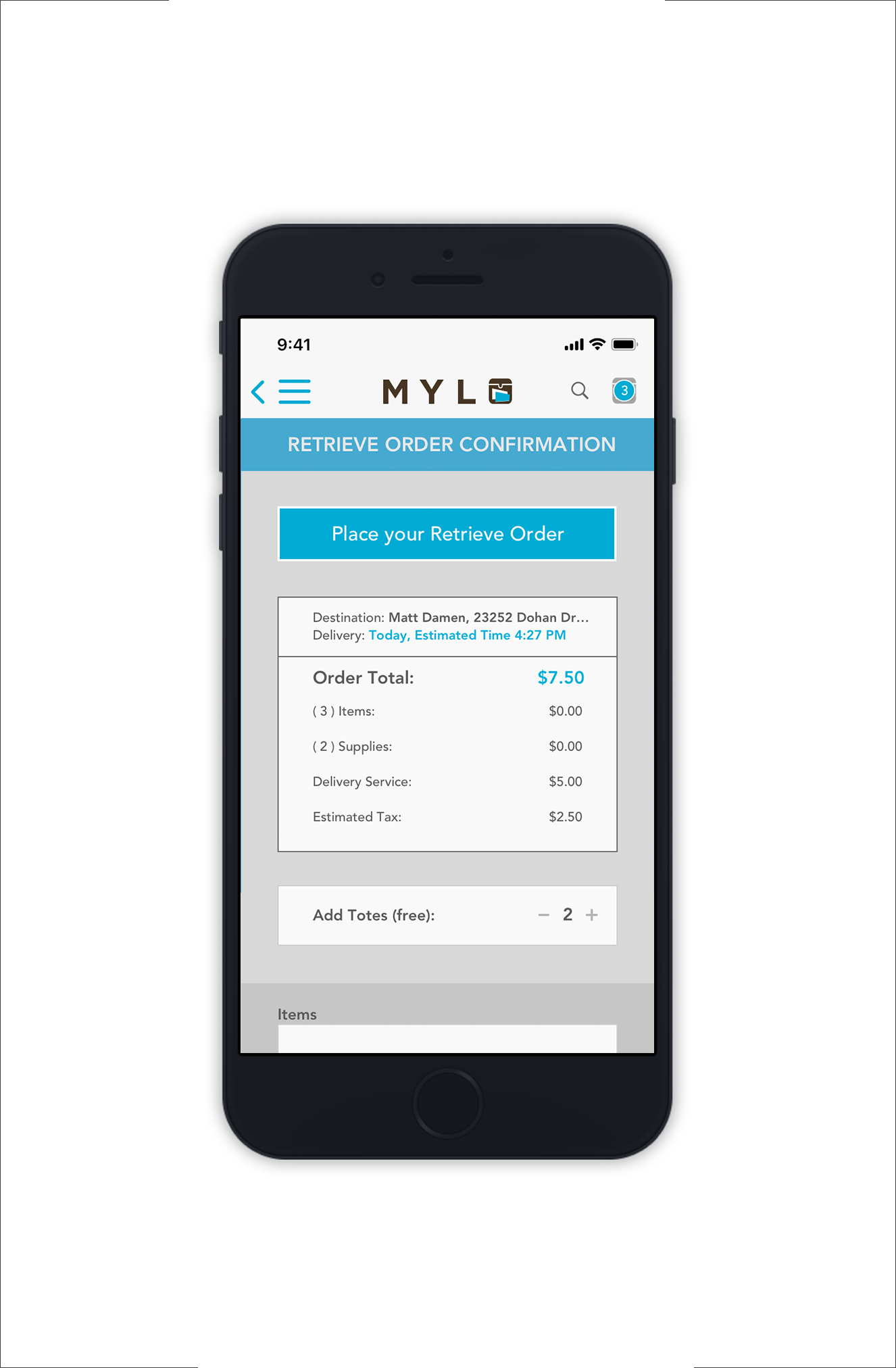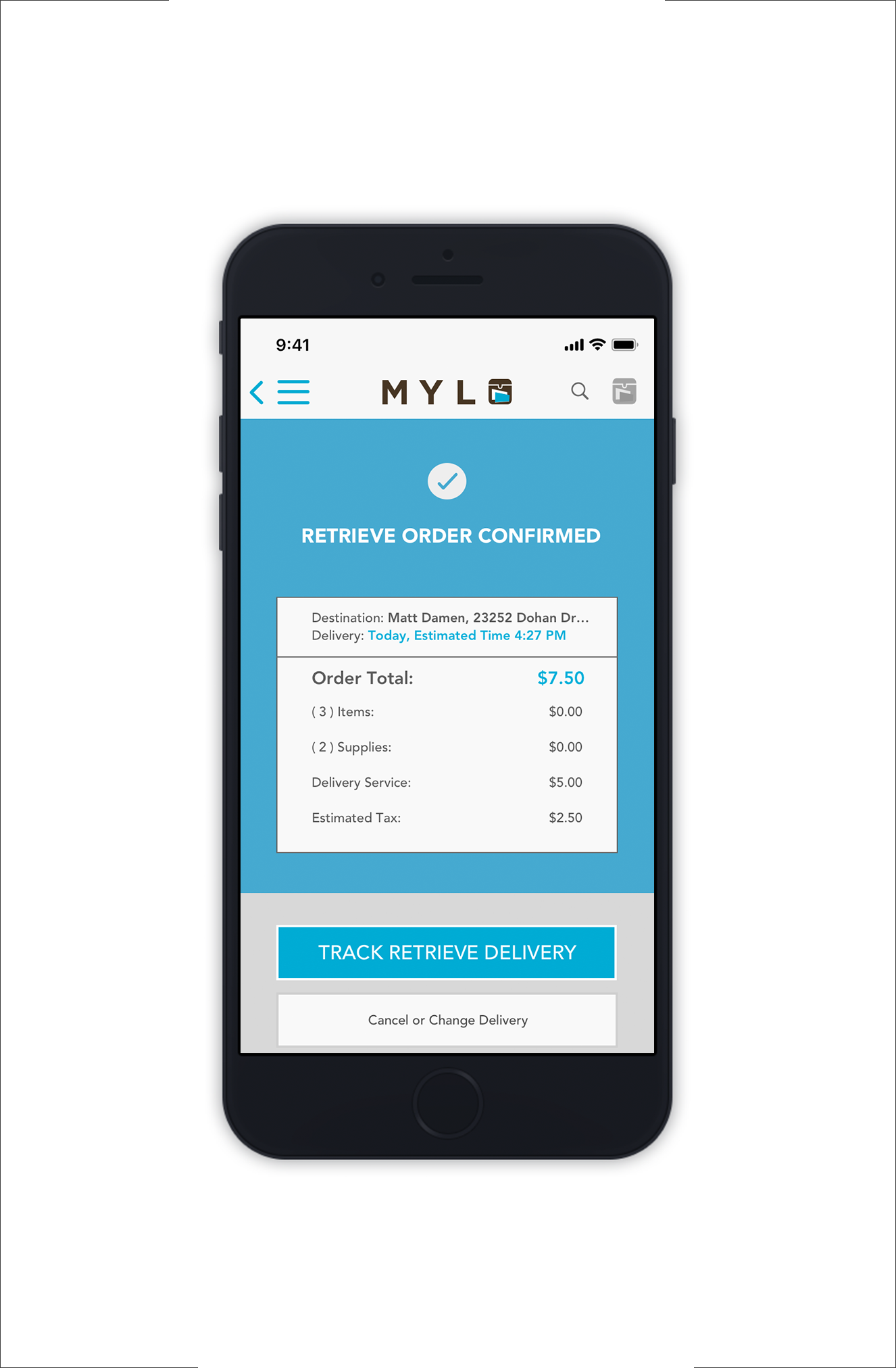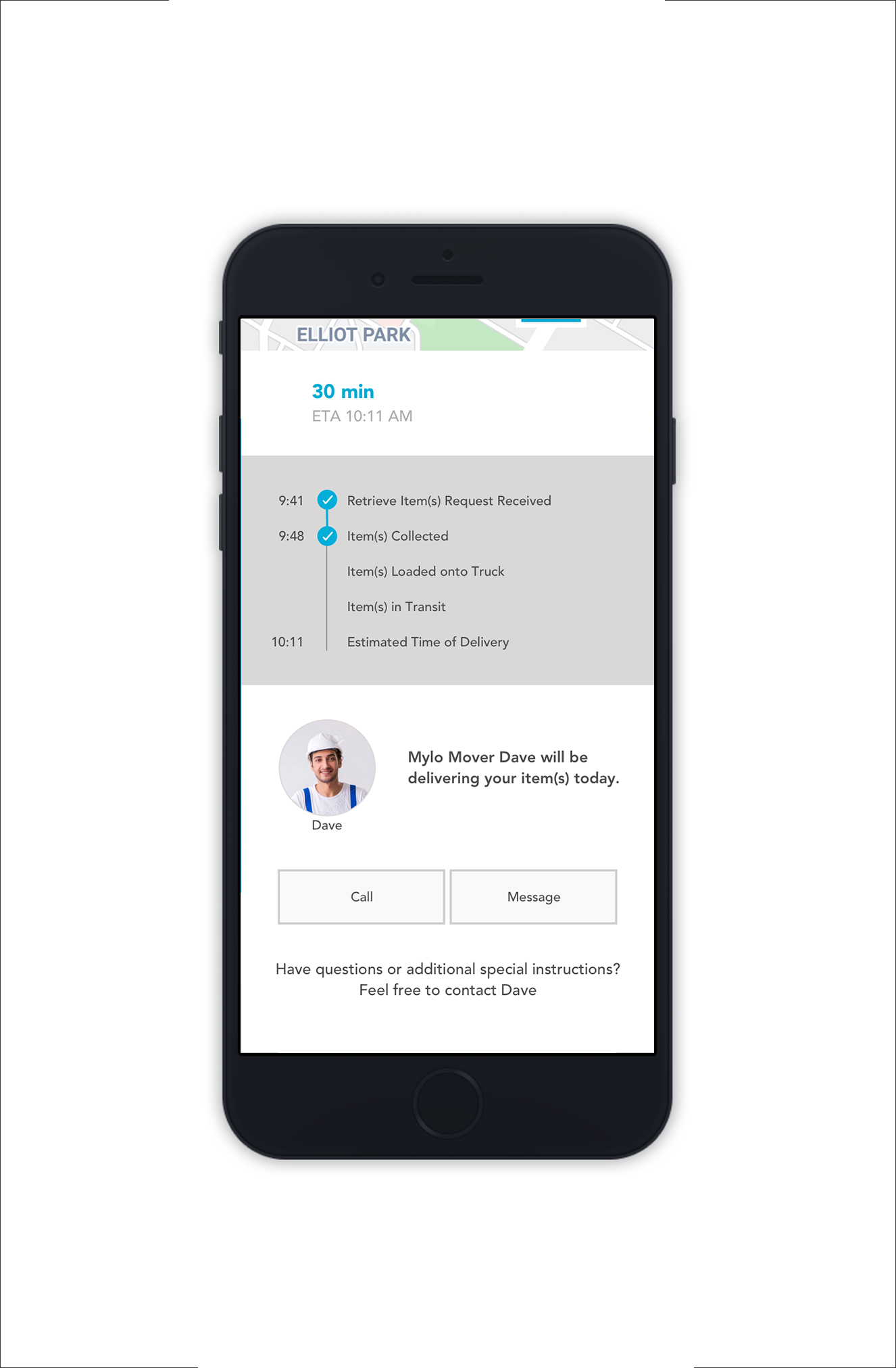Mylo's mobile app will allow users to catalog items, schedule pick-ups and deliveries to store or retrieve items from a local Mylo facility, and move their personal belongings on demand.
Client: Mylo
User: Twin Cities area residents looking for moving and storage solutions.
Tools: Sketch, Photoshop, Invision
Methods: Cognitive Walkthrough, Contextual Inquiry, Remote Interview, Rapid Prototyping
The Challenge
Mylo, an on-demand valet moving and storage service startup, needed research and feedback on whether or not their mobile application was heading in a direction to support their business goals.
The Solution
The research found that Mylo would best serve their customers, service providers, and business goals by first focusing on app development in these areas: focusing on seamless user and service provider interactions, by providing in-app education about how Mylo works to develop trust and competence in the process, and by implementing a consistent app menu and navigation experience.
Proposed Solution: Interactive Prototype Walkthrough
My Role
The Mylo project coincided with the first week of our state issuing its first a stay at home order in response to the pandemic. For students and staff, this marked a rapid transition from in-class on-campus learning and practice to a remote-based class and practice.
This was a group project, however, much of the work we did accomplish was completed remotely on our own. The main activity we accomplished as a group was conducting remote testing of the Mylo provided application wireframes. During this part of the project, I helped write the script, take notes, and moderated a remote testing session.
The individual work I accomplished on this project started with a documented cognitive walkthrough. I then used it in conjunction with the data collected from remote testing to write a research findings report and prototype plan for addressing key opportunity areas. Finally, I used my prototype plan to build out a prototype of an important section of the user and service provider interaction flow. I chose to build the application in Sketch and then created an interactive prototype demonstration using Invision.
Project Overview
Mylo is a pre-revenue local startup that aims to be a full-service storage and delivery solution for individuals looking to secure short-term storage for their goods, with an increased focus on transparency. Mylo wants to deliver an application-based experience to its user base that will allow them the luxury of valet and on-demand moving and storage solutions. Mylo aims to be transparent by allowing the user to receive condition and delivery information on the user’s items in storage or on the move. The application would also allow customers to document, organize, and catalog a digital gallery of their items to be used as an easy reference when requesting items from storage.
To ensure Mylo was on track with their goals, their prototype app was tested using cognitive walkthrough and contextual survey methodology. These methods produced valuable data allowing for insight into areas that may create obstacles or confusion for the intended user and illuminated areas that may need refinement. This document outlines key research findings and proposed recommended focus areas for improvement to be used by the Mylo team to enact changes for supporting greater usability and transparency with customers and service providers.
Key Findings from Research
From research, it was found that the most critical opportunity to focus on is educating the user on how to use the app and creating a more user-friendly flow. By conducting a cognitive walkthrough of the app from a first-time user’s perspective, it was discovered that it was challenging for users to understand what the Mylo application allowed users to do and what Mylo could provide as a business. This app aims to be an on-demand Storage and moving solution, however testing unveiled that this is not communicated effectively through the initial app prototypes.
Mylo’s business model would be providing familiar services in a new unfamiliar way. By doing so, this model would be considered a new mental model for the industry. Therefore, to help users understand and trust the services provided education and/or demonstration of Mylo works would likely be necessary. If clearly Illustrated and set up somewhat like other on-demand apps, with clear step by step instructions and initial walkthroughs, the Mylo app will have the ability to connect Mylo customers and Mylo service providers to quick and easy storage solutions.
Recommended Focus Areas for Improvement
For both the Mylo Customer and Service Provider:
1. Simplify the user flow during onboarding and focus on making Customer and Service provider interaction points seamless and intuitive.
2. Create a menu system that accessible and consistent at all steps. Simplify and display confirmation / next buttons that conform to conventional mobile app navigation items.
For the Mylo Customer:
1. Develop a walkthrough education system that aids the customer with step by step instructions for using the app and what to expect from Mylo while managing their property.
2. Develop trust with the customer. Educate the Mylo customer of all touch points (website, app store, app, etc…). Educate and display who Mylo is, what Mylo does, and how Mylo manages their belongings to keep them safe and secure. Educate the customer on why and how they can trust the services provided by Mylo.
For the Mylo Service Provider / Mylo Mover
1. If the customer is required to sign off on services using the service provider’s device, develop a notification system to let service providers know when to give / or face their tablet to the customer for signatures or confirmations. OR develop a system of interaction that prompts the customer to sign or confirm services on their device when a Mylo service provider requires one.
2. Develop a walkthrough education system that aids the Mylo Service Provider with step by step instructions for using the app and what Mylo expects of them in their role.
Proposed Solution: Interactive Prototype Walkthrough






Project Reflection
The most impactful part of working on this project did not come from the project itself but from the the worldwide pandemic that caused our state to impose the first stay at home order and effectively changing our group work dynamics. This transition from in class learning to remote learning happened over the course of the week. My team and I rapidly tested out new apps and ways for us to stay connected and remotely work together. It was a challenging time, but we were able to adapt, work together, and deliver our findings.
The aspect of the Mylo project that stood out to me occurred during the remote testing sessions using the basic wireframe prototypes that Mylo had provided. I assumed we were not going to receive good data from the interviews because the user would have to fill in the gaps of the incomplete design. What I found interesting is that, yes, those gaps do get in the way, but that a long and structured interview can still reveal some great data.
I also found that I enjoyed moderating interviews and digging into the different levels a person thinks or feels about how the app is working. In some ways, it felt like a detective who was trying to understand and discover how different people think and approach the tasks within the app.





